==================
A Caveat and Affiliates
First off, a little caveat: within my articles you will find affiliate links, meaning if you buy them, I get a small commission. Your cost is not affected. In addition, I am an Amazon Associate and I earn from qualifying purchases on Amazon.
And yes, if I say that I recommend a product here, it means I truly believe it is a good product. I refuse to recommend any product that I have not researched and believe to be a good value.
Even better, I provide you with a very clear picture of the product, it’s use, and the probable value.
Earning your trust is important to me. I run this website myself and the commissions and donations help support the site.
Sound reasonable and fair enough? Let’s continue to the article.
==================
Best Herbs to Grow Hydroponically
Herbs are one of the most easy-to-grow and most rewarding crops. But what if you don’t have any area to garden? Well, you can still grow herbs! Read on for the best herbs to grow hydroponically.
Regardless of whether you want to grow herbs for medicinal or culinary purposes, hydroponics is an excellent way to grow herbs. One of the biggest reasons to grow herbs hydroponically is that they grow very fast.
Moreover, they come with more flavor and aroma than the soil-grown herbs. According to recent research, herbs that you grow hydroponically contain up to 35% more aromatic oils. Apart from that, growers can have a vast range of herbs growing that cannot flourish in their region.
Furthermore, since herbs are often small and fast-growing plants, hydroponics offer the best way to grow them without having soil or garden. You can even purchase a hydroponic kit with everything incorporated at an affordable price.
But, which are the best herbs to grow hydroponically? Below, are some of the most productive and reliable herbs to grow hydroponically.
Tips to Grow Herbs Hydroponically
-
Lighting
If you’re considering having a hydroponic garden to grow herbs, I recommend having T-5 output fluorescent fixtures along with 6500K tubes. It is because you can place T5 6 to 12 inches from your plants and is far cooler than metal halide lamps. Moreover, they are also incredibly cost-effective and use a little energy.
-
Water and Nutrients
When growing herbs hydroponically, make sure to provide them with a good quality nutrient formulation. I highly recommend products that have a good ratio of phosphorus and are rich in nitrogen. Most herbs prefer between 1 to 1.6 electrical conductivity levels and dissolvable salt levels between 800 to 1200. Moreover, a slightly acidic pH (5 to 6.5) is also preferable.
-
Hydroponic System
Your hydroponic herbs also need good anchorage and aeration. So, using a growing medium like Hydroton clay pellets is an excellent idea. You can use it for both indoors and outdoors herbs. Using a siphon system keep the water in each growing pod lower than 2 minutes, pulling fresh oxygen to the roots. It is helpful for providing an excellent growing environment to keep your plants healthy.
Even those of us living in year-round gardening such as Florida often prefer to grow herbs indoors with hydroponics. In fact, they often grow faster and have more flavor and aroma. Some valuable points that I have noticed about growing herbs hydroponically include:
Tips to Know
- Herbs prefer a daytime temperature between 65F to 70F. However, they can also withstand temperatures climbing to 70F, which is helpful if the night temperature drops 10F below.
- Hydroponic herbs prefer to have adequate water, but you should avoid overwatering. It means you must have good drainage to pull fresh oxygen.
- Keep in mind that herbs are weakened by hot conditions. A dry indoor environment is also more susceptible to whiteflies, spider mites, and aphids.
- Growing plants outdoors is subject to various variables, including precipitation, temperature, and lighting. Because herbs grow vigorously in mild, consistent, and controlled environments, a hydroponic system is the most suitable option for growing herbs. They thrive at normal room temperature, making them less vulnerable to temperature fluctuations.
- One of the biggest issues with soil mixes is overwatering and underwatering. Excessive or inadequate water may kill your herb plants. In comparison, growing herbs hydroponically enable a consistent water supply and nutrients, eliminating the stress involved with growing plants in the soil.
- Another benefit of growing herbs hydroponically is not only do you avoid the mess of soil mix, but it also increases the growth rate of plants up to 50%. It means you will have more fresh herbs throughout the year.
- Soil is the favorite place for pests. Flies, gnats, and other insects can cause harm to your soil mix plants. Since the hydroponic systems need no soil, you don’t have to think much about pests. There will be no weeding and no soil-borne diseases.
- If you are still not impressed with the idea of growing herbs hydroponically, consider this. Research conducted by the University of Minnesota states that hydroponically grown herbs produce up to 40% of aromatic oils as compared to those grown in the soil. It means your hydroponic herbs are of much better quality and have more flavor.
Benefits of Growing Herbs Hydroponically
So, what are the best herbs t grow hydroponically?
Top 10 Best Herbs to Grow Hydroponically
1. Basil

Basil in an outdoor hydroponics system
With roughly 50% of the total herb market, Basil is one of the most popular herbs grown in Europe. The United States and some Asian countries also have a love affair with growing basil. Native to India, it is also known as the king of the herbs. Basil is an important part of both Southeast Asian and Italian cuisine.
It adds a flavor infusion, closely resembling anise. Some varieties have a sweet yet bold aroma. Italian cuisine particularly is known for its use of Genovese basil (sweet basil). It is also one of the essential ingredients that you will find in Italian pesto sauce.
On the flip, Asian cuisine prominently uses basil holy basil, Thai basil, and lemon basil. In order to avoid flavor damage due to high heat, they add basil at the very last moment of cooking, maintaining the integrity of its flavor.
With the rise of the locally produced movement, restaurants are now discovering the happiness of growing herbs hydroponically, using homegrown herbs to incorporate a fresh taste to their menus. It is why basil is one of the most famous herbs. Some popular types of culinary basil for hydroponic growing include Thai basil, lemon basil, sweet basil, lettuce leaf basil, globe basil, cinnamon basil, Siam Queen basil, and purple basil.
Quick Facts
- It is a bushy herb that can grow up to 24” in height.
- You can grow it from a cutting or its seed.
- Ensure that daytime temperature is between 70 to 80F.
- Basil plant needs good airflow to remain vigorous.
- It needs at least 10 to 12 hours of daily light.
2. Chamomile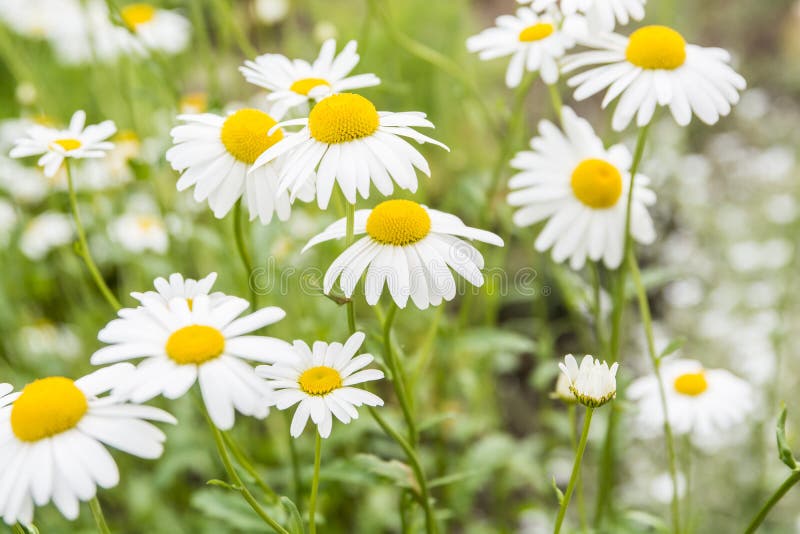
If you are someone like me who loves tea, you might want to grow your chamomile in your home with hydroponics. It is known for its amazing antioxidant properties that help reduce the risk of heart diseases and cancer. Chamomile also helps fight poor digestion system and insomnia.
Some growers use a floating seed tray to help germinate their seeds. Once it grows up to 2” in height, you may want to remove the weakest ones to make sure there’s only one strong seeding left in the tray. However, germination of chamomile may take up to two weeks. Also, ensure that your chamomile gets at least 16 hours of light daily.
Chamomile has broad compatibility as it pertains to pH ranges. It can be anywhere between 5 to 7.5. For optimal growing results, you may want to hit in the middle at 6.5. After five to seven weeks, you will be all set to harvest your chamomile.
When harvesting, cut the flowers up to 3 inches of the stem off and then leave them to dry in a shady area.
Quick Facts
- They grow in the form of small shrubs that usually hit up to 12 inches in height.
- German chamomile can grow up to 3 feet.
- They have green, feathery leaves.
- Chamomile flowers consist of large individual flowers known as florets.
- The plant blooms from June to July.
- You can use chamomile in the form of tea, lotion, tincture, drops, or capsules.
3. Parsley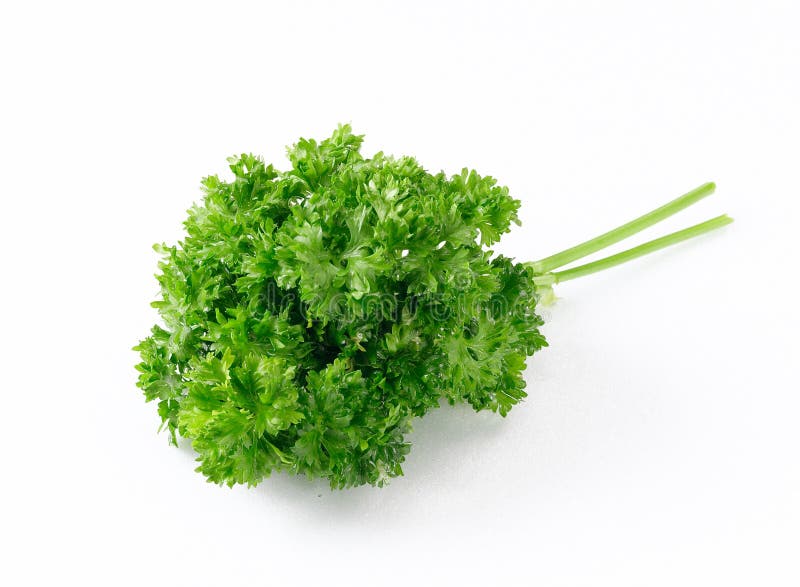
Native to the Mediterranean region of southern Italy, Algeria, Greece, and Tunisia parsley is another herb that you can grow hydroponically. Nowadays, parsley is grown in almost all regions of the world, making it a popular herb to cultivate.
American, Middle Eastern, and European cuisine add parsley into their cuisine to add some flavor. You can also use this popular herb as a garnish. It isn’t uncommon to see fresh green chopped parsley sprinkled on top of various dishes at restaurants.
The herb has two major groups that are curly leaf and flat-leaf. Since it is common to use parsley to decorate dishes, the curly-leaf is the variety that is often chosen for garnishment. Moreover, Italian parsley is a more preferable and more popular herb in culinary arts.
Quick Facts
- Parsley belongs to the same family as carrots, celery, and cumin.
- Chewing parsley help eliminate bad breath.
- Parsley has two types – flat-leaf and curly leaf.
- The herb prefers to grow vigorously in temperate climates.
- It prefers a pH level between 5.5.
- The herb isn’t much demanding. Just provide it with adequate light and a warm temperature.
- California produces about 40% of the parsley in the US.
4. Rosemary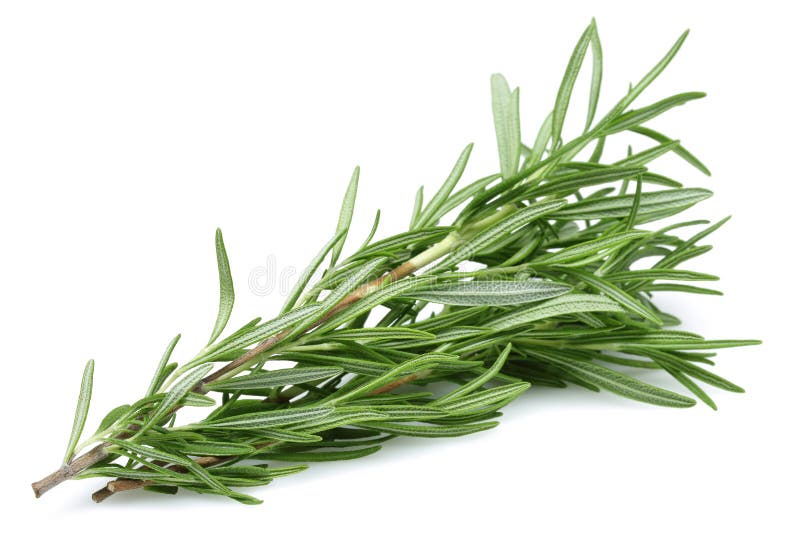
Native to the Mediterranean region, rosemary is a shrubby herb plant. It is scrappy, drought-tolerant, and produces an enchanting fragrance and taste. Almost every chef, homemaker, and a casual cook uses rosemary in their dishes. Its aromatic, needle-like leaves are used in culinary arts and beauty products.
Moreover, rosemary’s dry or fresh leaves are also an important ingredient of Italian cooking. The best thing about rosemary hydroponics is that you can commence new corps all year round.
You can grow rosemary, both through its seeds or cutting. However, it doesn’t propagate well through its seeds and has a low germination ratio. Thus, buying an established plant or using its cutting have a higher access ratio. It is one of the best herbs to grow hydroponically.
Moreover, you can use this herb as an aid for various problems, including digestion issues, cough, heartburn, headache, loss of appetite, toothache, and more.
Quick Facts
- It prefers a pH range between 5.5 to 7.
- Ensure that it gets adequate daylight (at least 11 hours ).
- Rosemary is a popular aromatic constituent of tonics.
- It is easy to grow the herb in temperate climates.
- The herb grows up to 3.3 feet (1 meter) in height.
- It produces evergreen leaves.
- Both fresh and dry leaves can be used in traditional Mediterranean cuisine.
5. Oregano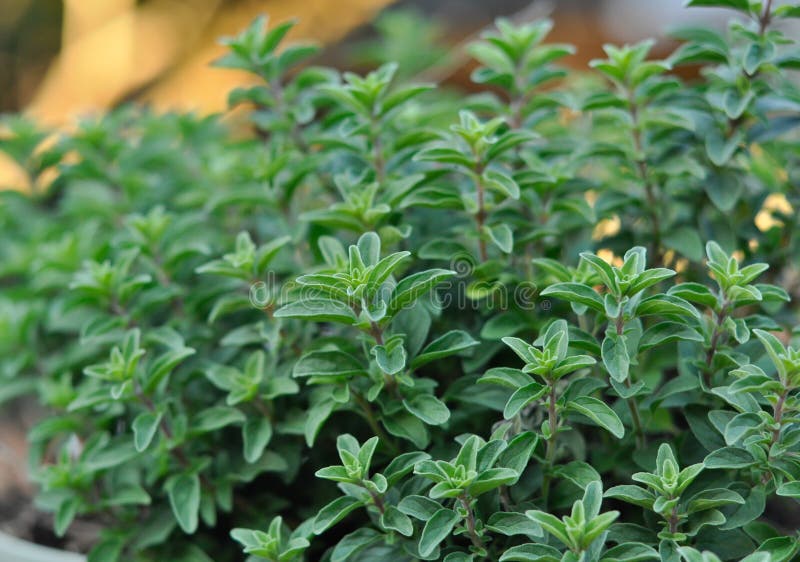
Another best herb to grow hydroponically is oregano. It belongs to the mint family and is used for various medicinal and cooking purposes. In ancient times, Greeks used this herb to treat menstrual cramps, GI disorders, skin conditions, urinary tract infections, and dandruff.
Oregano grows vigorously in pH ranges between .5 to 9.0. However, for optimal results, make sure the range should be between 6.0 to 8.0. You can use Rockwool cubes to germinate the herb seeds, which may take between 2 to 3 weeks. Some other popular media include Rapid Rooters, Oasis Root Cubes, and Grodan Stonewool.
Moreover, the herb is a slow grower and may take up to 7 to 8 weeks after a transplant up to your harvest. If you want to grow oregano outdoors, ensure that it gets adequate full sunlight. T-5 tubes are perfect to provide suitable light and to prevent burning or drying of the leaves.
Quick Facts
- When in bloom, oregano produces stunning edible purple or pink flowers.
- Oregano can grow up to 31.5 inches in height.
- The herb is grown as an evergreen sub-shrub in mild climates.
- It is an amazing herb to add to pasta dishes, especially omelets, bread, kebabs, roast potatoes, chicken, and more.
- You can use it to keep of yeast infections, respiratory health, and strengthen the immune system.
- The herb is rich in antioxidants because of flavonoids and phenolic acids.
6. Cilantro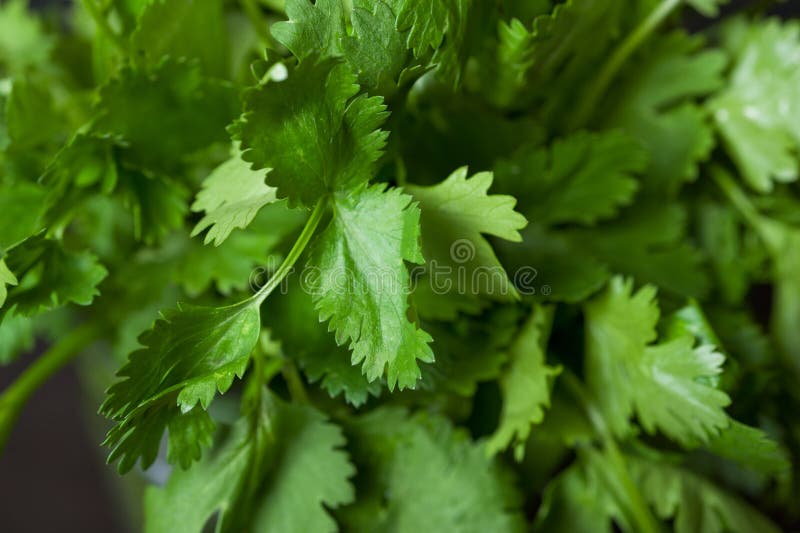
Cilantro is another herb that you can grow hydroponically. From seeds to harvest, it will take about 55 days to grow cilantro. The herb is also very low maintenance and you don’t have to trim it as well. You can harvest it both partially or fully.
If you are a food lover like me, you might know that a cilantro herb is an excellent option for garnishes, toppings, salsas, etc. However, some people don’t like the taste of it because they find its taste different. Some say it tastes cool and fresh, while others think it tastes like soup.
When planting cilantro, keep in mind that it requires plenty of water, but shouldn’t be overwatered. I also recommend Oscillating air to replicate a sturdy outdoor habitat.
Quick Facts
- It prefers a pH range between 6.5 to 6.7.
- Ensure that the temperature remains between 40F to 70F.
- However, in the 60F temperatures, you will see a faster germination rate.
- Be aware of common cilantro problems, such as powdery mildew and leaf spots.
- Protect it from high humidity levels and avoid too much moisture.
7. Thyme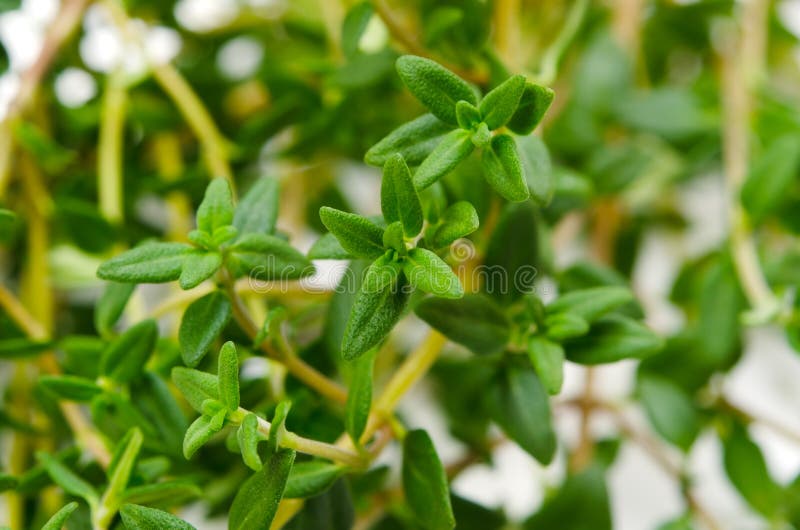
Another popular herb to grow hydroponically is thyme. You can grow it from a seed, though, but gardeners commonly avoid this practice. The reason is thyme seeds are hard to germinate and can take a lot of time to sprout. While through hydroponics, these seeds take 8 to 20 days to sprout.
Since the seeds are tiny in size, I recommend sowing these seeds shallowly. Once the young ones hit the height of 2 to 3 inches, they are ready to leave the nest so you can transplant them to the hydroponic system. During the thyme germination period, ensure that the temperature remains between 65F to 70F.
The second method to plant thyme is more popular. You can use the cutting method by dividing the roots of a mature thyme plant. It is also an easy and fast-growing technique to grow thyme. The plant prefers full sunlight, which means you can grow it outdoors.
However, if you want to grow it indoors, make sure to use T-5 fluorescent lamps. Make sure the fluorescent lamps are between 2 to 4 inches from the plants.
Quick Facts
- The herb features a gray to green stem and can touch 16 inches in height.
- It is an evergreen herb plant and produces small, aromatic oval-shaped leaves.
- When in bloom, you will see purple or yellow flowers.
- Thyme leaves and flowers can be used as a spice in stews, sauces, and soups.
- You can use the herb for dishes made of chicken, red meat, fish, and root vegetables.
8. Chives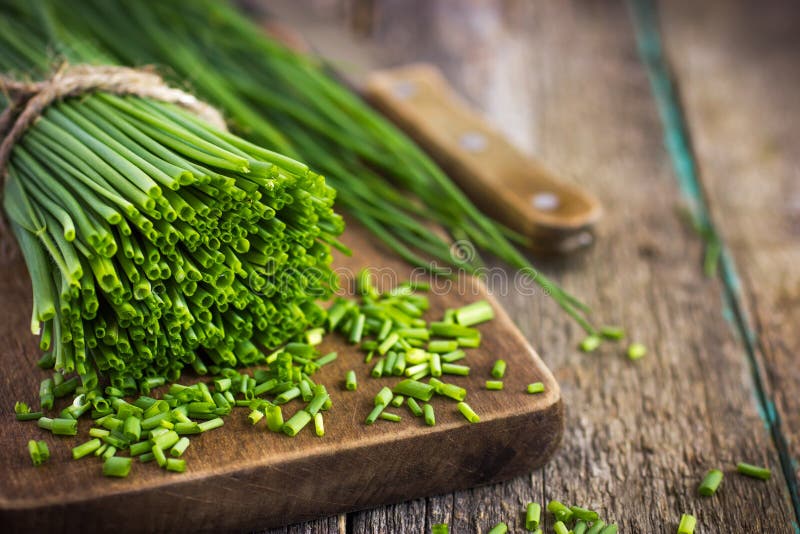
Chives are one of the popular and most successful herbs grown hydroponically. The perennial growth and tiny size of chives plants mean they take a little space and offer a constant supply of fresh leaves for both indoor and outdoor hydroponics. The herb flourish under hydroponic cultivation, enduring a vast range of growing conditions.
Moreover, the herb is also a multitalented plant with a mild to strong onion flavor. The flavor depends on the growing conditions and variety. The herb is also a fast-growing plant, which means they are incredibly productive in terms of the effort and time you put in.
Even if dry chives are feasible, fresh chives provide an entirely different and more rewarding experience.
Quick Facts
- They have a thin, tubular stem, reaching up to 20 inches in height.
- Like any other type of onion, chives also develop tiny bulbs from the roots.
- They produce purple, star-shaped flowers.
- You can propagate the herb through seeds or the division of clumps.
- Chives provide a mild, sweet to savory, and slightly pungent flavor.
- The flowers of the herb are also edible and can be used as a garnish.
- It is a rich source of minerals and essential vitamins, including C, K, folic acid, iron, magnesium, and manganese.
9. Mint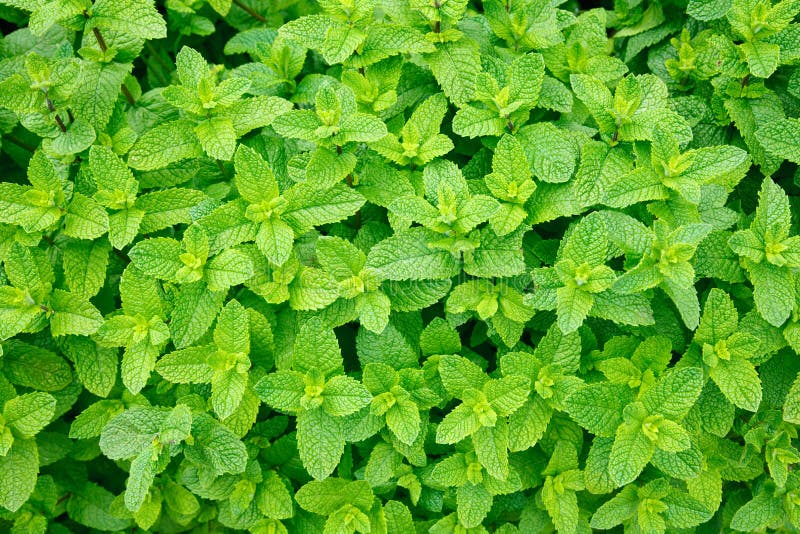
Unlike an ordinary herb, mint is a whole mindset. During my childhood, we were divided into two groups: kids that like mint flavors and those that like lemon flavors. The mint flavor is undoubtedly the most common and most appreciated around the world.
You can find it in drinks, sweets, candies, jellies, salads, and salty dishes. Moreover, the herb is also very strong and generous. It is a fast grower, disease-free, and doesn’t need much of your time or attention.
Also rich in essential oils, the herb doesn’t only offer a fresh-smelling breath, but also offer various other health benefits, such as:
- It helps the digestion system and aid indigestion.
- Due to its anti-nauseous properties, mint is helpful in preventing sea and plane sickness.
- It helps your memory and makes your brain more efficient.
These and many other benefits make mint one of the best herbs to grow hydroponically.
Quick Facts
- Like any other herb, mint also loves sunlight. So, when growing it indoors, make sure to provide it at least 16 hours of light daily.
- You can easily grow the mint in a wide pH range. pH ranges between 5.5 to .5 are ideal.
- The best electrical conductivity for nutrient solution ranges between 2.0 to 2.4.
- The herb prefers fresh air at night. However, make sure to protect it from cold.
- Ensure that temperature remains between 55F to 70F during the day.
10. Watercress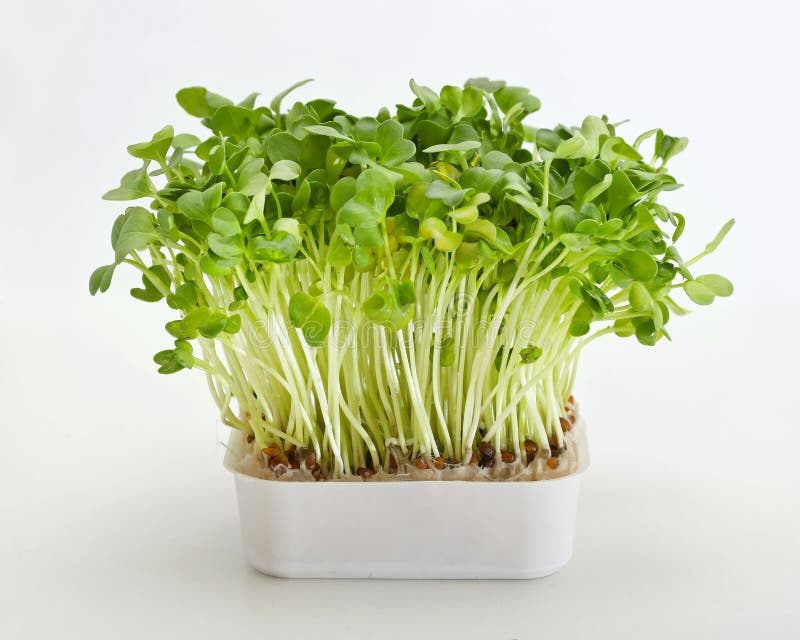
Last but not least, Watercress is another herb to grow hydroponically. You can propagate the herb from its seeds or by using the cutting method. Cutting a stem and placing it in nutrient-enrich water will grow new roots within a couple of days that you can transplant into your hydroponic system.
Through this simple technique, watercress can be started from the branches of the stem that you can purchase from a grocery store. Producing a tangy peppery flavor, it is a fast-growing and strong herb that you can easily find on the salad shelves in various supermarkets.
Unlike most of the herbs originating from the Mediterranean, watercress originates from Asia. However, it is now extensively cultivated in the US and Europe. Because the herb is rich in nutrients, it is also regarded as a superfood. Watercress is packed with essential vitamins, including A, C, K, Calcium, Manganese, Antioxidants, and various flavonoids.
Quick Facts
- The propagation of watercress hydroponically is incredibly easy. Just take a stem and place it in a nutrient solution. You will see new roots grow within a few days.
- The most suitable nutrient solution pH for watercress ranges between 6 to 6.8.
- For vigorous growth, make sure to keep the temperature between 77F to 86F.
- The herb prefers a low electrical conductivity (between 0.4 and 1.8).
Conclusion
We’ve included information about some of the best herbs to grow hydroponically. These tiny plants smell good, taste nice, and are the most precious gift from nature. If you want to grow herbs but don’t have a garden, don’t worry. Use the hydroponic system to plant these herbs. It will make sure that you get a fresh supply of leaves throughout the year.
Read More:
Low Maintenance Backyard Plants
Essential Spices for Cooking That Chefs Love (VeganGlobetrotter)
